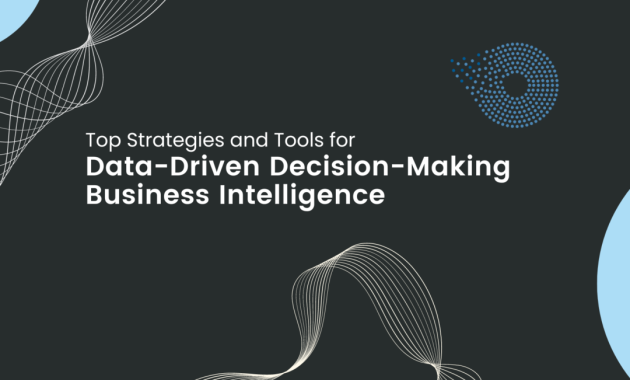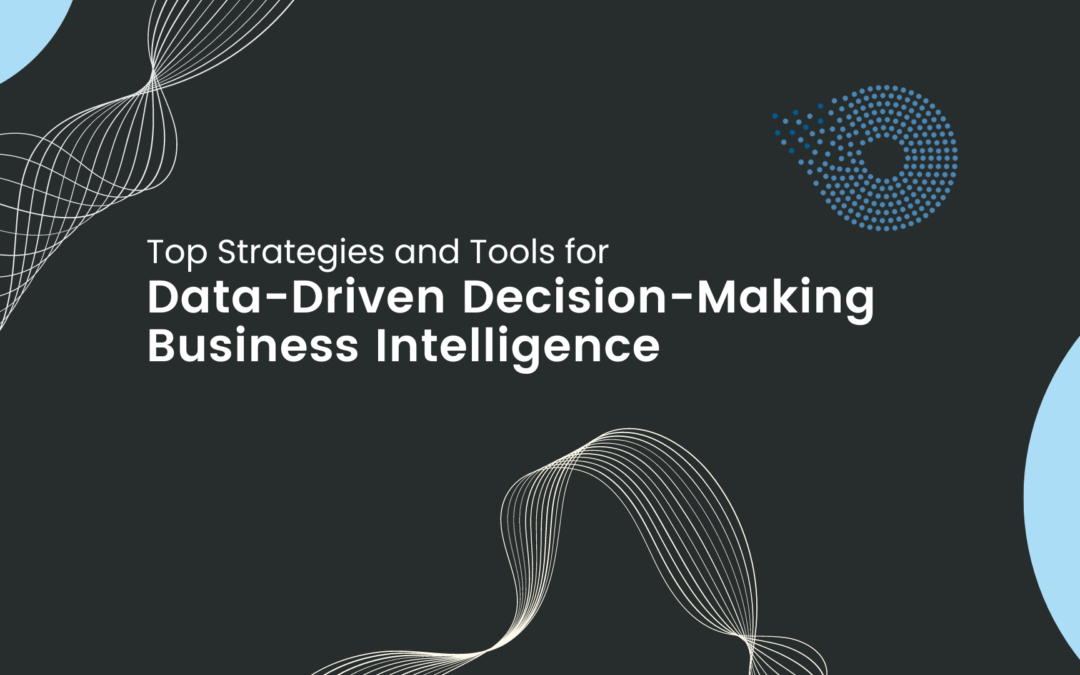
Why 8 Business Intelligence Tools Are Essential for Boosting Decision Making
In today’s data-driven world, businesses are drowning in information. The ability to extract meaningful insights from this deluge is no longer a luxury but a necessity. That’s where business intelligence (BI) tools come in. They empower organizations to make informed decisions, optimize operations, and gain a competitive edge. This article explores why business intelligence tools are critical and highlights eight essential tools for boosting decision-making.
The modern business landscape demands agility and responsiveness. Decisions based on gut feelings are increasingly risky. BI tools provide the data-driven foundation needed for strategic planning and execution. These tools transform raw data into actionable intelligence, enabling businesses to:
- Identify trends and patterns.
- Monitor performance metrics.
- Forecast future outcomes.
- Optimize resource allocation.
- Improve customer satisfaction.
By leveraging these capabilities, companies can make more confident, data-backed decisions. This ultimately leads to better business outcomes and a stronger bottom line. The effective use of business intelligence tools is a key differentiator in today’s competitive market.
The Power of Data Visualization
One of the most significant advantages of BI tools is their ability to visualize data. Complex datasets are often overwhelming. Data visualization transforms these datasets into easy-to-understand charts, graphs, and dashboards. This allows users to quickly grasp key insights and identify areas that require attention. Effective visualization is crucial for communicating findings to stakeholders. It allows for quicker understanding and faster decision-making.
Data visualization tools typically offer:
- Interactive dashboards.
- Customizable charts and graphs.
- Real-time data updates.
- Mobile accessibility.
These features empower users to explore data, uncover hidden relationships, and make informed decisions based on visual representations of the information. This is a vital element in the effective use of business intelligence.
Essential Business Intelligence Tools
Several BI tools stand out for their comprehensive features and user-friendly interfaces. These tools cater to a variety of business needs and technical skill levels. Selecting the right tools depends on specific business requirements and goals. Here are eight essential business intelligence tools to consider:
Tableau
Tableau is a leading data visualization and analytics platform. It is renowned for its intuitive drag-and-drop interface and powerful data exploration capabilities. Tableau allows users to connect to various data sources. It includes databases, spreadsheets, and cloud services. The platform offers a wide range of visualization options. These options include interactive dashboards and real-time data updates. Tableau is ideal for businesses that require advanced visualization features and in-depth data analysis. This tool helps boost decision-making.
Microsoft Power BI
Microsoft Power BI is a comprehensive BI platform. It integrates seamlessly with other Microsoft products like Excel and Azure. Power BI offers robust data modeling and reporting features. It supports a variety of data connectors. It also offers customizable dashboards and real-time data monitoring. Power BI is a cost-effective solution for businesses of all sizes. It is particularly well-suited for organizations already invested in the Microsoft ecosystem. This tool is an excellent choice for boosting decision-making.
Qlik Sense
Qlik Sense is a self-service BI platform. It uses an associative data model to connect and analyze data from various sources. Qlik Sense’s associative engine allows users to explore data in new and innovative ways. It uncovers hidden relationships and insights. The platform offers data visualization, data preparation, and advanced analytics features. Qlik Sense is suitable for businesses that need a flexible and user-friendly BI solution. This tool helps boost decision-making.
Looker
Looker is a modern data analytics platform. It is designed for data-driven organizations. Looker allows users to define and manage data consistently. It provides a single source of truth for business intelligence. The platform offers data modeling, exploration, and visualization features. Looker is a good choice for businesses that need a collaborative and scalable BI solution. This tool helps boost decision-making.
Sisense
Sisense is a BI platform focused on ease of use and speed of deployment. It offers a drag-and-drop interface and pre-built dashboards. Sisense supports a wide range of data sources. It also provides advanced analytics capabilities. Sisense is a good fit for businesses that need a quick and easy-to-implement BI solution. This tool helps boost decision-making.
SAP Analytics Cloud
SAP Analytics Cloud is a cloud-based BI platform. It integrates with SAP applications and other data sources. The platform offers a wide range of features. These include data visualization, planning, and predictive analytics. SAP Analytics Cloud is a good choice for businesses that use SAP software and need a comprehensive BI solution. This tool helps boost decision-making.
ThoughtSpot
ThoughtSpot is a search-driven analytics platform. It allows users to ask questions in natural language and receive instant answers. The platform uses AI and machine learning to provide insights and recommendations. ThoughtSpot is ideal for businesses that want to empower their users to explore data. This tool helps boost decision-making.
Domo
Domo is a cloud-based BI platform. It provides real-time data insights and collaboration features. Domo offers a wide range of connectors and integrations. It also offers customizable dashboards and mobile accessibility. Domo is a good choice for businesses that need a centralized BI solution. This tool helps boost decision-making.
Choosing the Right BI Tool
Selecting the right BI tool is a critical decision. It requires careful consideration of several factors. Businesses should evaluate their specific needs, goals, and technical capabilities. Key considerations include:
- Data Sources: Ensure the tool supports your data sources.
- Ease of Use: Choose a tool that matches user skill levels.
- Features: Prioritize features aligned with business needs.
- Scalability: Select a tool that can grow with your business.
- Cost: Consider the total cost of ownership.
- Integration: Check for seamless integration with existing systems.
By carefully evaluating these factors, businesses can choose a BI tool that empowers them to make data-driven decisions. This will improve business outcomes. The correct tool is crucial for boosting decision-making.
Implementing Business Intelligence Tools
Implementing BI tools requires a strategic approach. Businesses should start by defining their goals and objectives. They should identify key performance indicators (KPIs). Next, they should select the right BI tool. Then, they should connect data sources and build dashboards. They should also train users and provide ongoing support. Regular monitoring and evaluation are essential. This ensures the tool continues to meet business needs. Effective implementation is vital for boosting decision-making.
Here are some key steps for a successful implementation:
- Data Preparation: Clean and prepare data for analysis.
- Dashboard Design: Create user-friendly dashboards.
- User Training: Provide adequate user training.
- Data Governance: Establish data governance policies.
- Ongoing Support: Provide continuous support.
Following these steps helps maximize the value of BI tools. It also ensures that they are used effectively throughout the organization. This leads to better business outcomes and improved decision-making.
The Future of Business Intelligence
The future of business intelligence is bright. Emerging technologies like artificial intelligence (AI) and machine learning (ML) are transforming the industry. These technologies automate data analysis. They also provide predictive insights. The integration of AI and ML is making BI tools more powerful and user-friendly. Businesses can expect to see even more advanced features. These will include automated insights and personalized recommendations. The goal is to boost decision-making.
Key trends in the future of BI include:
- AI-Powered Analytics: Automated insights and predictions.
- Cloud-Based BI: Increased accessibility and scalability.
- Data Democratization: Empowering more users with data access.
- Self-Service BI: User-friendly tools for data exploration.
As these trends continue, BI tools will become even more essential for businesses. They will provide a competitive advantage. They will also help organizations make better decisions. This will boost decision-making.
Conclusion
Business intelligence tools are indispensable for modern businesses. They empower organizations to make data-driven decisions. This leads to improved performance. The eight tools highlighted in this article offer a range of features and capabilities. They cater to diverse business needs. By selecting and implementing the right BI tools, businesses can unlock the power of their data. This will help them gain a competitive edge and achieve their strategic goals. The key is to use these tools to boost decision-making.
[See also: How to Choose the Right BI Tool for Your Business]
[See also: The Benefits of Data Visualization for Business]
[See also: The Future of Data Analytics: Trends and Predictions]

